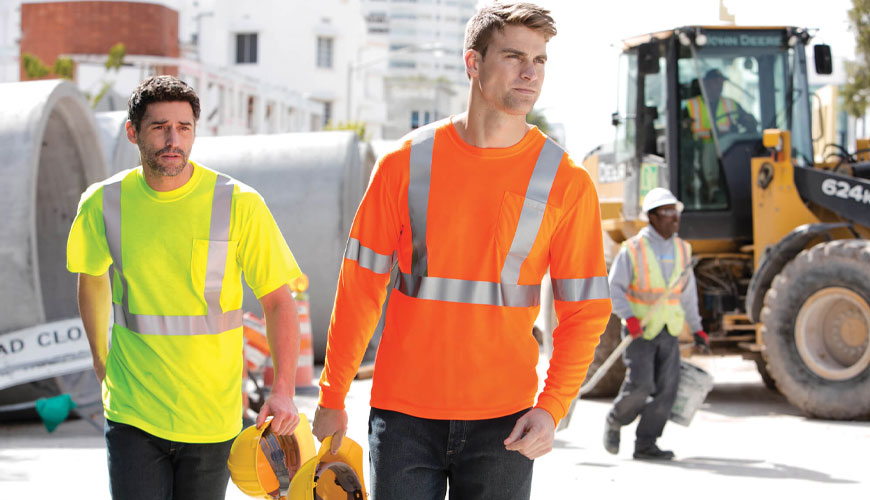

Developed by the International Standards Organization (ISO), the EN ISO 20471 standard specifies requirements for high-visibility clothing that can visually signal the wearer's presence. The purpose of high-visibility clothing is to draw attention to the wearer in any light condition when viewed by vehicle or other mechanized equipment operators in daylight conditions and in the dark under the illumination of headlights.

This International Standard does not apply to medium risk and low risk situations. It includes color and retroreflection as well as minimum areas and performance requirements for placing materials in protective clothing.
The performance of the visibility enhancement materials to be used for high-risk visibility clothing is determined photometrically with minimum space and placement (design) requirements.
Prominence is the property that allows an object to easily attract visual attention. This is an especially important feature in complex environments with visually competing objects. Prominence is determined by the brightness contrast, color contrast, pattern and design of an object, and its motion characteristics relative to the ambient background in which it is seen.
Three classes of clothing have been defined based on three different minimum areas of retroreflective, fluorescent or combined performance materials. Each of these classes will provide a different level of salience; class 3 is the class that provides the highest degree of conspicuousness against most backgrounds found in urban and rural situations, day and night. Users should select the required performance class based on a risk assessment of the location/situation where the protection afforded by garments according to this International Standard is required.
This International Standard contains requirements for risk assessment and risk analysis of high-visibility clothing. Possible designs showing the placement of retroreflective materials are included in the standard. Ergonomic factors such as the wearer's size, comfort and range of motion should be considered when selecting the most appropriate retroreflective and fluorescent material configuration within the garment.
Selection and use of high-visibility clothing may differ between wearer countries and may be subject to local regulations. This International Standard contains requirements for risk assessment of the situation in which high-visibility clothing will be used. This will include considering factors that may affect an observer's ability to detect that a person is there. The observer must both detect and recognize the user and then be able to take appropriate avoidance action.
The minimum requirements given in this International Standard are determined by specific test methods and the measurement values assigned to them. Tests are performed partly on new materials and partly on preconditioned materials. With preconditioning (for example, folding of retroreflective material) a load of materials is simulated. However, it should be noted that laboratory tests may not reflect real-life conditions. The distinctiveness performance of a garment may vary depending on use (eg dirt, solar radiation), care (eg cleaning agent, repair), storage (eg dust-free, opaque) etc. will depend.
High-visibility clothing is divided into three classes related to risk assessment. Each classroom will have a minimum of areas of high-visibility material incorporated into the garment. Garments must include the required background material and retroreflective material areas, or alternatively the required combined performance material area. The area should be measured in the smallest garment size available, with all fasteners set to the smallest possible configuration.
All sides of the garment should be made of high-visibility material. To ensure all-round visibility (360° visibility), it is important to have horizontal retroreflective tapes and fluorescent materials surrounding the torso, trouser legs and sleeves.
Performance class can be achieved by using a single garment or a group of garments, for example jacket and trousers. An assembly may be classified as a higher class if, for example, a classified trousers and a classified jacket meet the minimum requirement achieved by the area actually visible when wearing the garment. This higher class will be additionally indicated both in the usage information and on the labels of both garments.
Regardless of the area of the materials used, a class 3 garment shall cover the torso and have at least either retroreflective tape sleeves or full length trouser legs with retroreflective tape, if not both.
Among the services provided by our organization within the framework of material testing services, there are also EN ISO 20471 standard tests. Do not hesitate to contact EUROLAB laboratory for your test and certification requests.
To get an appointment, to get more detailed information or to request an evaluation, you can ask us to fill in our form and reach you.